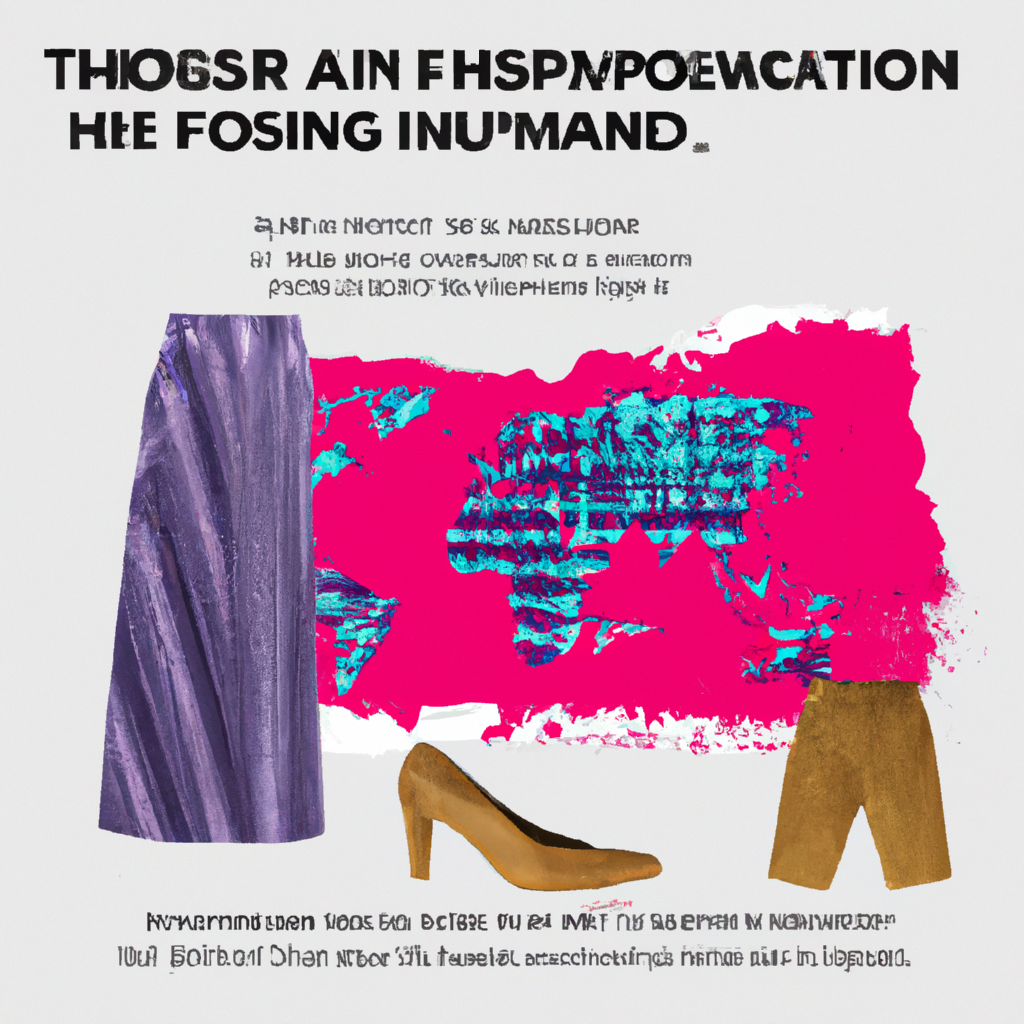In a world where fast fashion reigns supreme, the concept of sustainable fashion has emerged as a beacon of hope for the environmentally conscious consumer. Making eco-friendly choices when it comes to our clothing may seem daunting, but with the right knowledge and resources, it is entirely possible to make a positive impact on the planet without sacrificing style. Join us as we delve into the world of sustainable fashion, exploring ways in which we can make more mindful choices when it comes to our wardrobe.
Heading 1: Understanding the Impact of Fast Fashion on the Environment
Fast fashion is a trend that has taken the fashion industry by storm, but it comes with a heavy environmental cost. The constant production of cheap, trendy clothing leads to high levels of pollution, water wastage, and carbon emissions. Understanding the impact of fast fashion on the environment is crucial in making informed decisions about our clothing choices.
One way to combat the negative effects of fast fashion is by embracing sustainable fashion. By making eco-friendly choices, we can reduce our carbon footprint and support brands that prioritize ethical and environmentally conscious practices. From opting for clothes made from organic or recycled materials to supporting local and small businesses, there are many ways to make a positive impact through our fashion choices.
It’s important to consider the lifecycle of our clothing and the impact it has on the environment. By investing in quality pieces that are versatile and durable, we can reduce the need for constant consumption and contribute to a more sustainable fashion industry. Making conscious choices when it comes to our clothing purchases is a small step that can lead to a big difference in protecting our planet.

Heading 2: Incorporating Sustainable Materials into Your Wardrobe
When it comes to incorporating sustainable materials into your wardrobe, there are a variety of eco-friendly choices you can make that not only benefit the environment but also contribute to a more ethical fashion industry. By opting for sustainable clothing options, you can reduce your carbon footprint and support brands that prioritize eco-conscious practices.
One way to embrace sustainable fashion is by choosing garments made from organic materials such as organic cotton, hemp, or bamboo. These materials are grown without the use of harmful pesticides and chemicals, making them better for the environment and for your skin. Additionally, look for clothing made from recycled materials, such as recycled polyester or upcycled fabrics. By giving new life to existing materials, you can help reduce waste and promote a circular economy.
Another way to incorporate sustainable materials into your wardrobe is by supporting brands that prioritize transparency and ethical production processes. Look for companies that use fair trade practices, provide fair wages to workers, and ensure safe working conditions. By choosing to support these brands, you can feel good knowing that your clothing purchases are making a positive impact on both people and the planet.
Overall, making eco-friendly choices when it comes to your wardrobe can have a significant impact on the fashion industry and the environment as a whole. By being conscious of the materials you choose and the brands you support, you can help create a more sustainable future for fashion. Let’s all work together to make a difference one outfit at a time!
Heading 3: Supporting Ethical Fashion Brands and Practices
When it comes to making eco-friendly choices in the world of fashion, supporting ethical fashion brands and practices is crucial. By choosing to invest in sustainable fashion, we can help reduce the environmental impact of the textile industry and support ethical working conditions for garment workers around the world.
One way to support ethical fashion brands is to look for certifications that guarantee the clothing was produced in an environmentally and socially responsible way. Brands that are certified by organizations such as Fair Trade Certified, Global Organic Textile Standard (GOTS), and the Better Cotton Initiative are a great place to start when looking for sustainable and ethical clothing options.
Additionally, it’s important to consider the materials used in the clothing we purchase. Opting for natural fibers such as organic cotton, hemp, and bamboo can help reduce the use of harmful chemicals and pesticides in the production process. By choosing to buy clothing made from these materials, we can make a positive impact on both the environment and the health of those involved in the production process.
| Material | Properties |
|---|---|
| Organic Cotton | Chemical-free, biodegradable |
| Hemp | Durable, requires less water |
| Bamboo | Soft, fast-growing renewable resource |
Heading 4: Tips for Extending the Lifespan of Your Clothing Items
Do you want to contribute to sustainable fashion and make eco-friendly choices in your wardrobe? One of the best ways to do so is by extending the lifespan of your clothing items. By taking care of your clothes properly, you can reduce the environmental impact of the fashion industry and save money in the long run. Here are some tips to help you make your clothes last longer:
- **Wash Less Frequently:** Avoid washing your clothes after every wear, as this can cause unnecessary wear and tear. Instead, spot clean stains and air out your clothes to refresh them between washes.
- **Follow Care Instructions:** Always read the care labels on your clothing items and follow the instructions for washing, drying, and ironing to ensure they stay in good condition.
- **Invest in Quality Pieces:** When shopping for new clothes, opt for high-quality, timeless pieces that are well-made and will last for years to come.
- **Rotate Your Wardrobe:** Give your clothes a break by rotating them regularly, which will help prevent overuse and prolong their lifespan.
By following these simple tips, you can help reduce the amount of clothing waste that ends up in landfills each year and do your part to support sustainable fashion. Making eco-friendly choices in your wardrobe doesn’t have to be difficult – it just requires a little extra care and attention to ensure your clothes last as long as possible.
In conclusion, making eco-friendly choices in fashion can have a positive impact on both the environment and society as a whole. By opting for sustainable fashion practices, we can help reduce waste, promote ethical production methods, and support brands that prioritize sustainability. Let’s all do our part in creating a more sustainable and ethical fashion industry for a better future for all. Let’s make eco-friendly choices the new trend in fashion.


